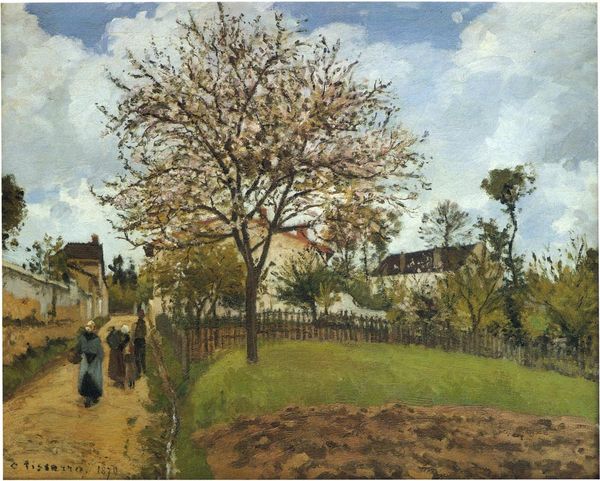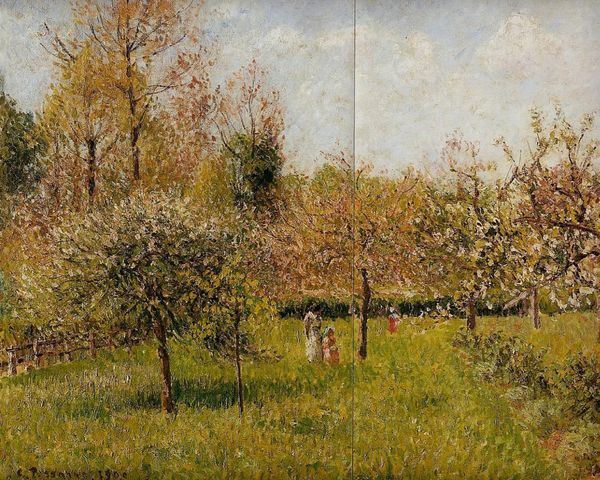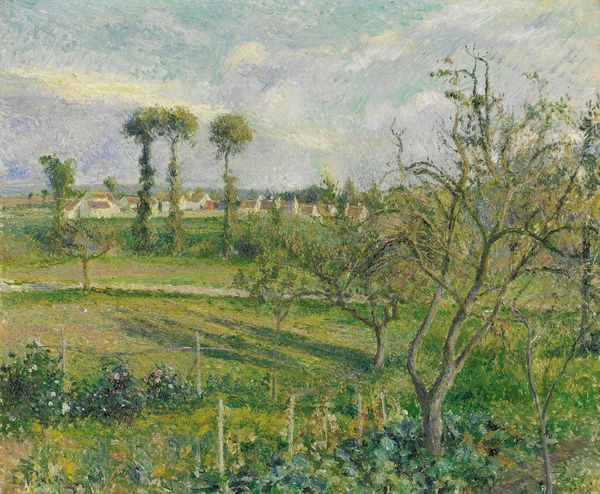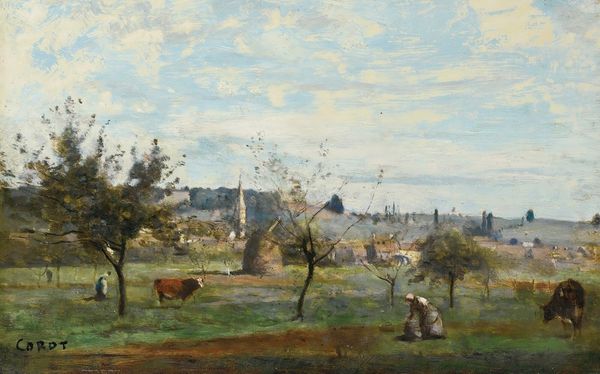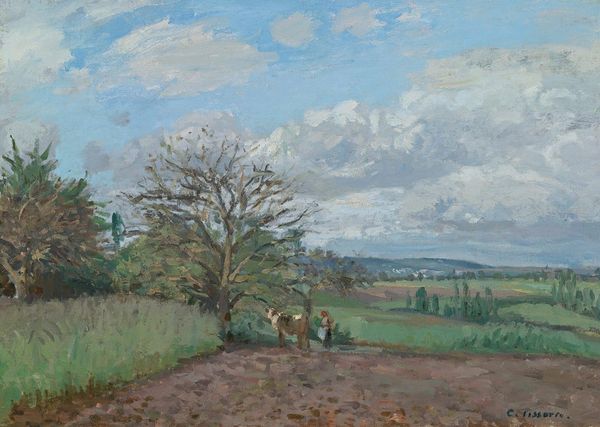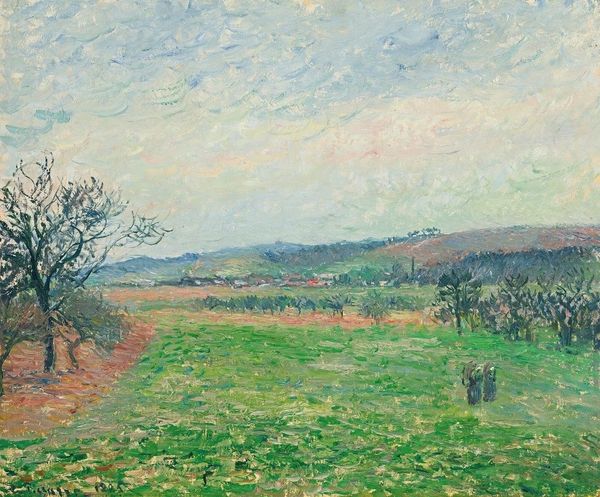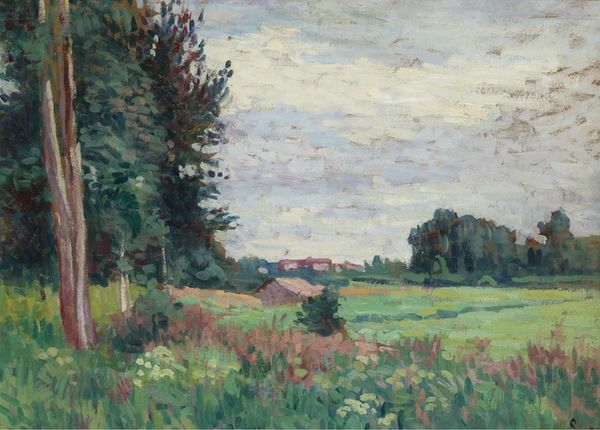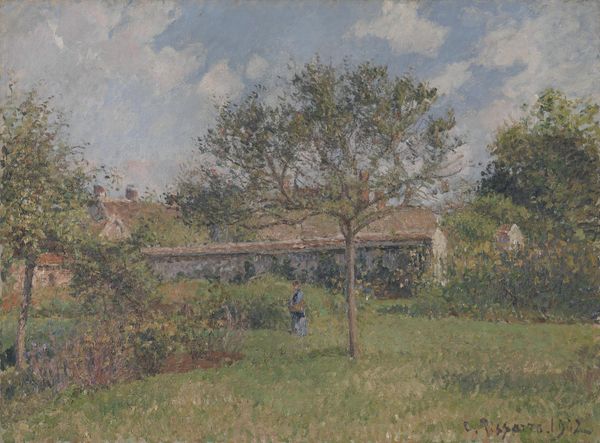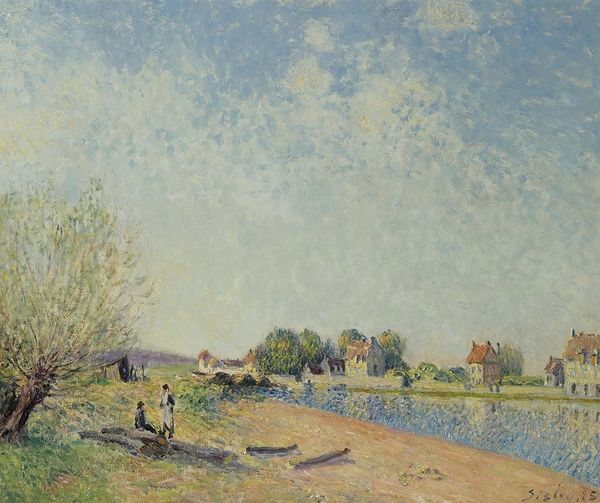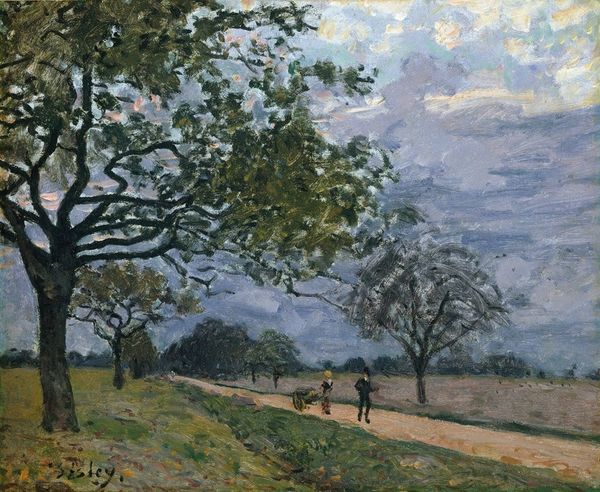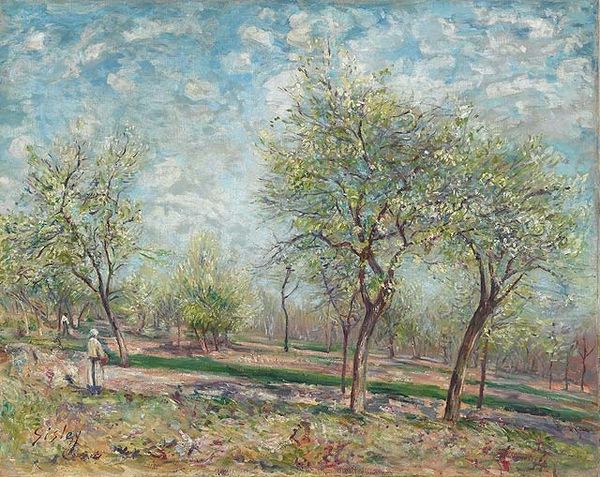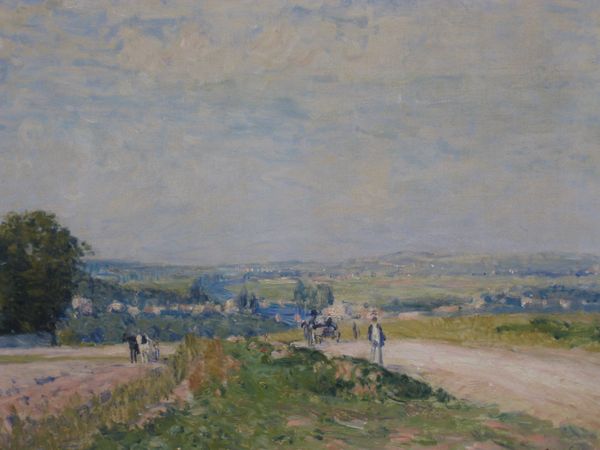
painting, plein-air, oil-paint
#
painting
#
impressionism
#
plein-air
#
oil-paint
#
landscape
#
impressionist landscape
#
figuration
#
oil painting
#
naturalistic tone
#
genre-painting
Copyright: Public domain
Curator: Looking at this image by Alfred Sisley titled, "Children Playing in the Fields," painted in 1879, I am immediately struck by how fleeting the moment feels. There's a sense of impermanence in the scene, from the transient clouds to the figures captured in mid-play. Editor: Indeed. It encapsulates a very specific moment in Impressionism where the everyday subject became a vessel to experiment with light and capture life’s subtle transience, with a particular attention to naturalistic tones. Do you notice how Sisley captured the clouds' likeness in a specific fashion? Curator: Precisely, the skyscape mirrors the emotional tones in a way, carrying on through centuries: contemplation mixed with playful optimism. The clouds, the blooming trees – they all signify renewal and growth, very traditionally so. It almost resembles paradise through a nostalgic, impressionistic gaze. Editor: The positioning of the children contributes significantly to this impression. Set within an apparently quotidian setting—an unmanicured field, with just a rough wooden fence at the edge of a town—, it’s hard not to see them through the historical lens of burgeoning modern life encroaching upon rural idylls. It mirrors the complex relationship between progress and nostalgia of late 19th-century bourgeois societies. Curator: You are right. Notice how those rural settings can often echo deeper societal themes about identity and place. For the kids to be portrayed with the pastoral landscape has, throughout the history of painting, echoed a quest to capture both innocence and the individual’s symbiotic harmony within a larger world. The choice of location gives these children a context beyond just being “kids in a field”. It speaks of the continuity with the nature through many ages. Editor: Perhaps that's the tension, and maybe the enduring quality. We view it today with the same lens of complex nostalgia for simpler times, understanding even more acutely what Sisley’s contemporaries were likely starting to sense: the industrialization age, a loss of connection with pastoral worlds as population expands, new labor opportunities change traditional communal bonds. The painting, in this view, becomes not merely an image of children playing, but a socio-historical time capsule and a visual expression of cultural transition. Curator: Yes, seeing those forms interacting brings us full circle; it’s hard to disconnect personal stories from broader societal shifts when studying cultural art pieces like this one. Editor: A quiet yet poignant painting which invites one to linger between personal memories and collective experiences across time.
Comments
No comments
Be the first to comment and join the conversation on the ultimate creative platform.
